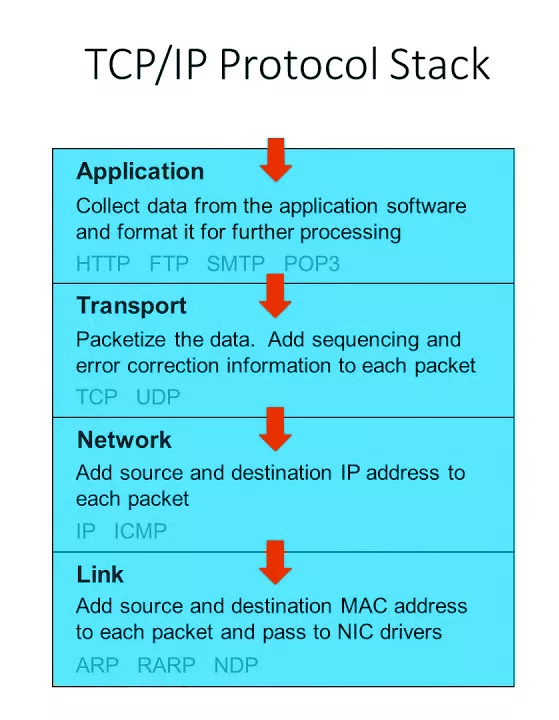In our previous article we introduced the IoT tree which aims to simplify the process in selecting the most suitable IOT-specific protocol for your new connected device. An important overarching question when developing an IoT product is whether your device is or will be IP enabled. This is one of the main factors which will influence your decision-making process.
It is thus important to understand how IP works or which many refer to as the IP Stack.
IP is the network communications protocol by which data is sent, using data packets, from one computer to another on the Internet. Each computer (known as a host) on the Internet has at least one IP address that uniquely identifies it from all other computers on the Internet. IP addresses and IP data packets are, therefore, the two main networking elements defined by IP. The predominant networking stack is an TCP/IP stack that comprises four layers, namely:
- An application layer: include various protocols performing functions such as application, presentation and session. It includes interacting with the application, data translation and encoding and comms coordination between systems. HTTP is one of the most common application layer protocols used today.
- A transport layer: Protocols, such as those discussed above, take the user data, add a header, and pass it down to this layer (the transport layer) to be sent across the network to the destination. It is concerned with the end-to-end transportation of data and sets up a logical connection between the hosts. The two protocols available in this layer are TCP and UDP.
- An internet layer: Once TCP and UDP have segmented the data and have added their headers, they send the segment down to the network layer. However, the ultimate destination may reside in a different network far from the host divided by multiple routers. It is the task of the internet layer to ensure that the segment is moved across the networks to the destination network. IP is the most common protocol that provides these services.
- A network access layer: The network access layer of the TCP/IP stack defines the protocols and hardware required to connect a host to a physical network and to send data across such network.
The TCP/IP stack is, therefore, a complete set of networking protocols.

The TCP/IP Stack
If your device has an IP-enabled stack and you can control the firmware yourself, it will provide you with ample flexibility to develop and build an IoT product with full control down to chip-level. We will have a look at the advantages of having an IP enabled device with customisable firmware in our next article.





